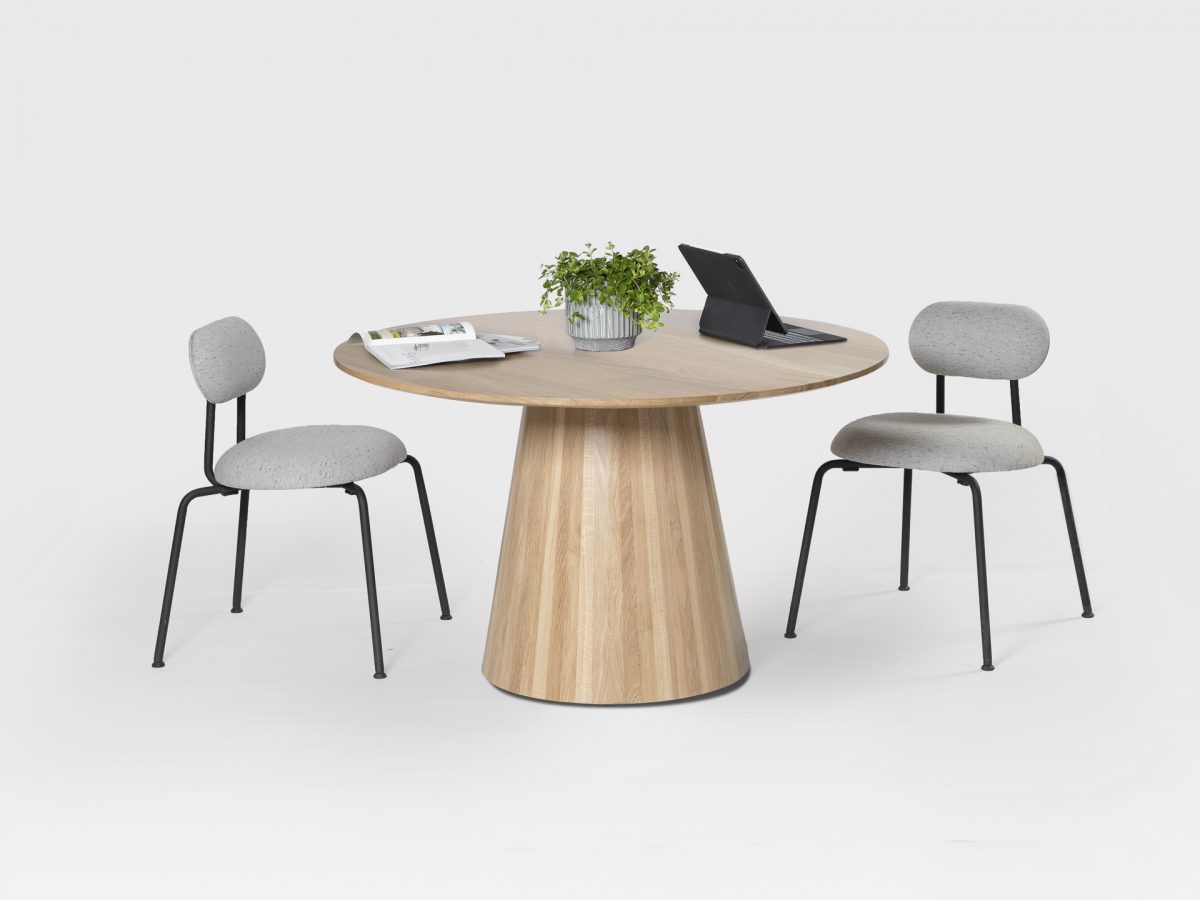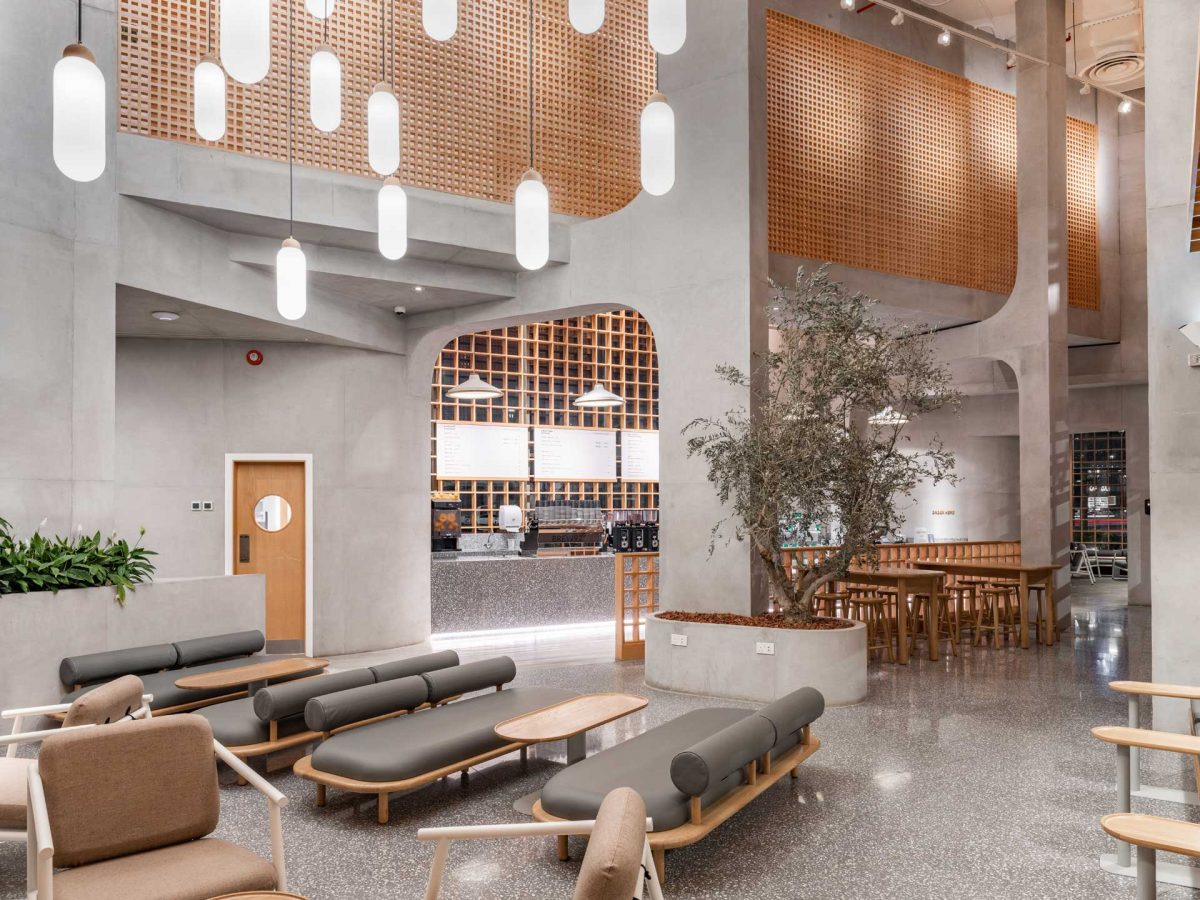WORKPLACE WELLNESS DESIGN
DESIGNING WORKPLACES THAT IMPROVE AND PROMOTE MENTAL HEALTH AND WELLNESS

At Liqui, we value simple, honest and functional design, made using sustainable materials and combining traditional craftsmanship with modern innovation. We take a person-centred approach to our work and know that design has the power to impact an individual’s health and well-being. For this reason, we seek to promote personal health and wellness throughout our many projects.
Promoting workplace mental health and wellness
Today’s modern age of new media coupled with the ubiquity of technology is fundamentally changing how we live, socialise and work. As informed individuals, we are increasingly alert to factors that can impact our health and well-being: for example, a growing number of employees expect more choice and flexibility at their place of work. Conventional workplace wisdom, that which promotes a staid office environment with employees tethered to their desks, is, in many instances, no longer accepted practice. By contrast, a cadre of progressively minded employers and employees prefer to think of the workplace as adaptable, dynamic and fresh, one that promotes personal health and wellness.
In the UK, an estimated 137.3 million working days were lost due to sickness or injury in 2016.1 Among those reasons cited, mental health issues (including stress, depression and anxiety), resulted in 15.8 million days lost 1: indeed, stress and mental ill health are among the most common causes of both short-term and long-term workplace absenteeism.2 In a 2017 ‘Mental Health at Work Report’, it was found that 60 percent of employees have experienced a mental health issue as a direct consequence of work.3
Mental health, and wellness more generally, are affected by our physical surroundings. When designing office spaces, at Liqui we understand that wellness should be at the core of each and every design. Our aim is to encourage a better state of physical, mental and social well-being for employees, so bolstering staff retention, productivity, creativity and happiness levels. We are cognisant of wellness research and guidance, and strive to incorporate findings into our thinking on office design. One noteworthy point of reference is the WELL Building Standard™ (WELL). Launched in October 2014, WELL is a leading benchmark on implementing, validating and measuring the features that support and promote health and wellness when designing and building office spaces.4 Delivered by the International WELL Building Institute™, WELL establishes evidence-based requirements centred on a number of features: air, water, nourishment, light, fitness, comfort and mind. At its core, ‘[if] WELL can enable a healthier, more engaged and more productive workforce, there will be financial benefits [for organisations].’5
Whether it’s by adopting a standard such as WELL or implementing in-house wellness initiatives, increasing numbers of organisations are embracing the need for a genuine focus on employee health and well-being. At Liqui, we recognise that priorities include addressing requirements around space, such as choice and collaboration, and environmental concerns, from light and sound to workplace experiences.
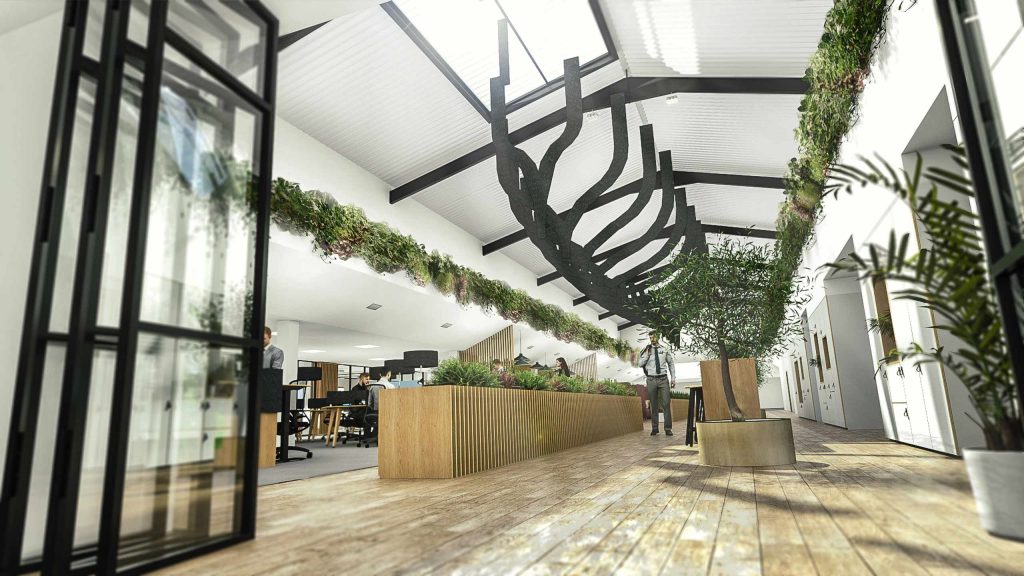

Space: choice and collaboration
In workplace design, we believe variety is key. The space should accommodate an array of working preferences and furnishings, and provide a choice of work-based settings, including: small desks for solo working, larger tables for team projects, breakout spaces for informal catch-ups, private spaces for formal meetings, quiet places for concentration, and lounge areas to enjoy a coffee and chat. People can move around, choosing to work in the space ideally suited to their needs, and at the same time retaining a personal desk as a base. While a desk might remain the focal point of an individual’s work, having a choice of workspace environments encourages collaboration across teams. Moreover, by promoting movement and creating a less sedentary way of working, a choice of workspaces will promote an employee’s mental health and overall well-being.
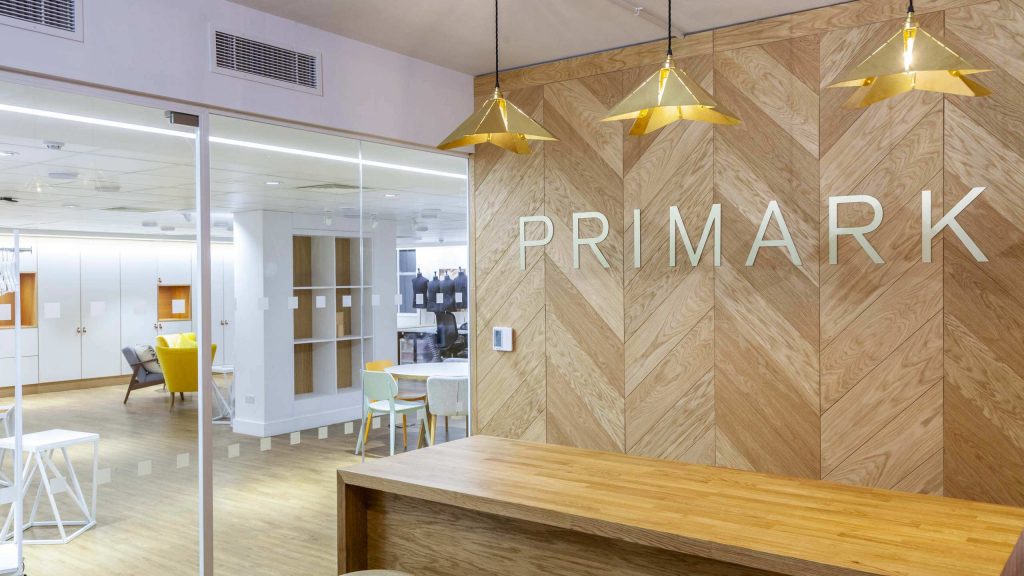
Fashion retail giant Primark recruited Liqui to design its London-based press office. We created a welcoming and well organised space, with a bright and airy aspect. With the office acting as an everyday workplace and PR venue, we incorporated a range of storage and display options (for clothing and accessories), different seating arrangements, a dedicated meeting room and a reception whose counter functions as a mobile bar unit.

Environment: light, sound and experience
The office environment has a direct impact on wellbeing, productivity, absenteeism and staff retention. A significant environmental factor is light, especially natural light. When designing an office, at Liqui we understand the importance of encouraging the spread of natural light throughout the space—incorporating glass walls when creating meeting rooms for example, is one technique. When choosing artificial lights, it is beneficial to think about their placement (as a direct or indirect lighting source), workability, utility and aesthetic appeal. Workplace acoustics should also be considered. A noisy environment is one of the main contributing factors to high levels of stress and increased heart rates. It is possible to dampen noise levels with mechanisms that include acoustic ceiling installations and acoustic light fittings.
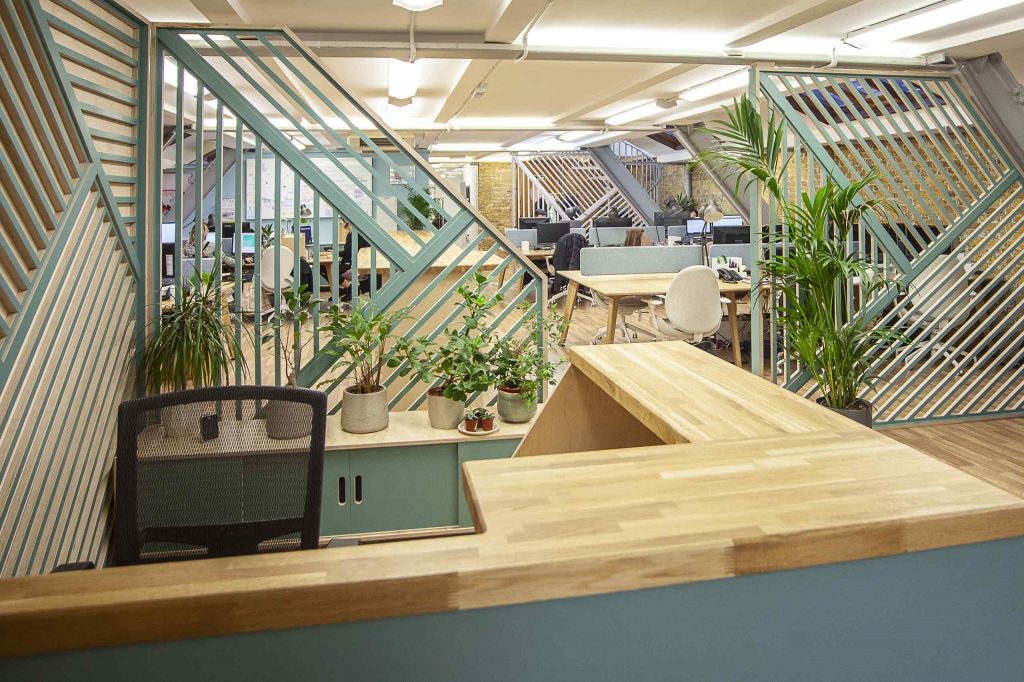
Liqui worked with the London-based Allegra Group to create an office that emphasises versatility and functionality. We divided the office into a number of areas, using open slatted wooden dividers to maintain a sense of flow. This clever application of dividers ensures the workspace maintains an airy and spacious mien.
From an experiential viewpoint, it is necessary to reduce the anxiety that might be caused by working in large areas. This result can be achieved by making a large area appear smaller, utilising design-led space partitions in a manner that does not hinder collaboration between colleagues and teams. Where an office has a considerable ceiling height, this can be lowered by using structural installations. Furthermore, embracing positive colour choices and incorporating natural materials, including wood, stone and textiles, will have a positive effect on anxiety levels.
In Allegra’s office, Liqui added greenery throughout the space, keeping wellness in the workplace firmly in mind.

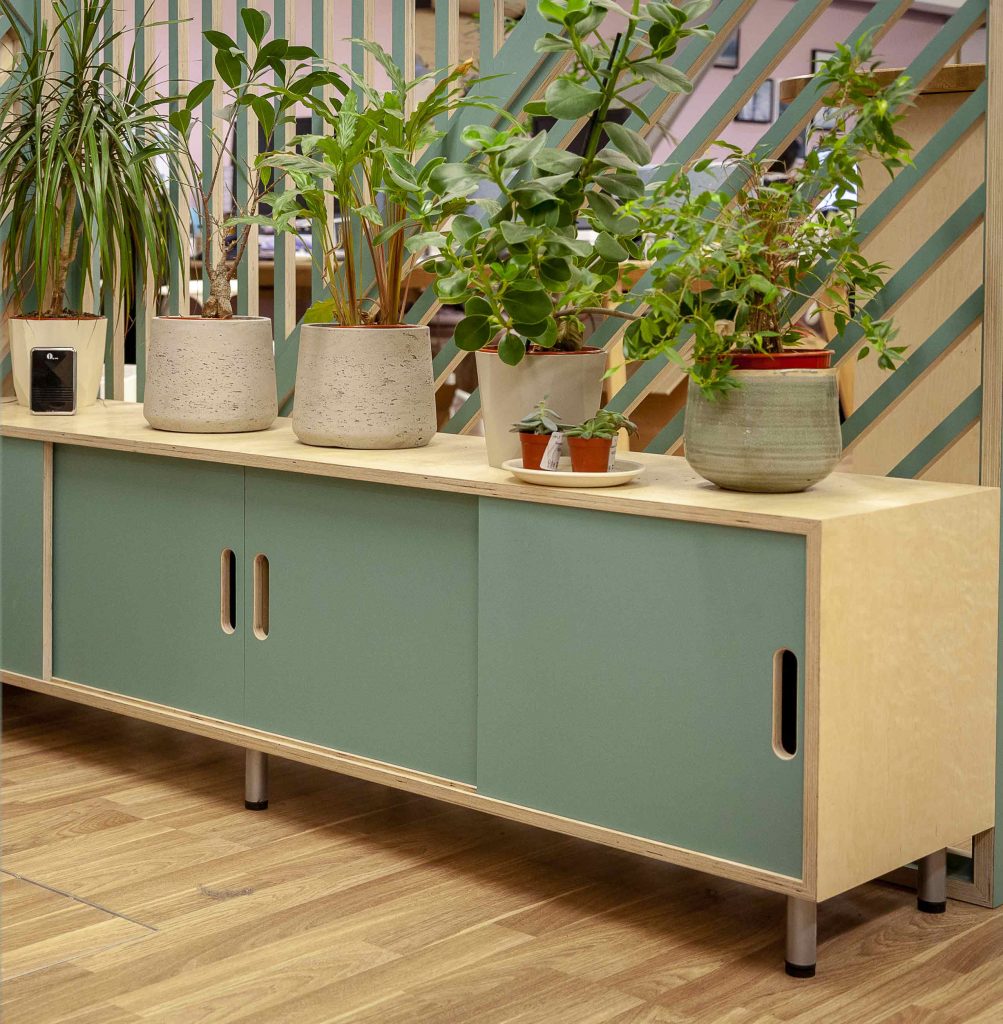
Another experiential component is the use of greenery in the workplace. Plants are known to make a positive contribution to our physical environment: they reduce the levels of certain pollutants, purify the air, improve mood and boost concentration. With plants—and nature generally—people tend to feel happier and healthier. According to the theory of ‘biophilia’, humans have an innate tendency to seek connections with nature.6 We understand implicitly that nature enhances well-being; ergo, adding plants throughout an office will work wonders for the mind and body. If a company has an outdoor space, creating an environment which is conducive to working and socialising outside, from open air meetings to al fresco lunches, will further benefit productivity, creativity and well-being.
In conclusion
By combining a focus on both space and environmental factors, at Liqui we know it is possible to create workplaces that positively impact an employee’s mental health and well-being. With increased levels of collaboration and productivity, the result is one that greatly benefits both the employee and the company.
References
- ONsgov.uk. (2017). Sickness absence in the UK labour market: 2016. [online] Available at: https://www.ons.gov.uk/employmentandlabourmarket/peopleinwork/labourproductivity/articles/sicknessabsenceinthelabourmarket/2016 [Accessed 19 Feb. 2019].
- CIPD (2018). Health and Well-being at Work.
- bitc.org.uk. (2017). Mental Health at Work Report 2017. [online] Available at: https://wellbeing.bitc.org.uk/system/files/research/bitcmental_health_at_work_report-2017.pdf [Accessed 19 Feb. 2019].
- International WELL Building Institute. (2019). About. [online] Available at: https://wellcertified.com/about-iwbi [Accessed 21 Feb. 2019].
- com. (2017). Joyce Chan on the WELL Building Standard – onoffice magazine. [online] Available at:https://www.onofficemagazine.com/people/item/5161-building-in-health-by-stealth-joyce-chan-on-the- well-building-standard [Accessed 21 Feb. 2019].
- Encyclopedia Britannica. (2017). Biophilia hypothesis. [online] Available at:https://britannica.com/science/biophilia-hypothesis [Accessed 20 Feb. 2019].
